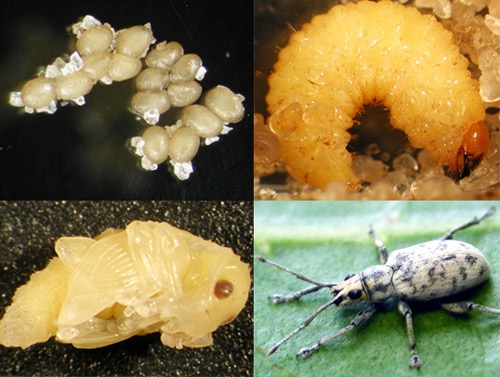Just so we don't forget, but there are a lot more threats to California than ACP and PSHB. There's a lot more where they came from. Here's one that has landed in Florida that could easily with the shipment of infested plants arrive in California.
Myllocerus undecimpustulatus undatus Marshall, the Sri Lankan weevil, is a plant pest with a wide range of hosts. The Sri Lankan weevil was first detected in 2000 in Florida. By May, 2006 it was found in 12 counties in that State. The Sri Lankan weevil has a wide host range of over 150 plant species including native, ornamental, vegetable and fruit species. Some host plant examples include Citrus spp., citrus; Conocarpus erectus, green buttonwood; Bauhinia x blakeana, Hong Kong orchid tree; Chrysobalanus icaco, cocoplum;Phoenix roebellenii, pygmy date palm; Prunus persica, peach; Lagerstroemia indica, crepe myrtle;Capsicum spp., pepper; Litchi chinensis, lychee; Muntingia calabura, strawberry tree; and Solanum melongena, eggplant. It is unclear what the larval host plants are, but they have been reared in the laboratory on pepper, eggplant, cotton, carrot, and sweet potato roots.
The damage adults cause to foliage can be significant in the ornamental industry and to young citrus trees they can be lethal. The most disturbing aspect of this pest is that it has a larval stage that feeds on roots and is difficult to detect and treat with traditional insecticides. This pest behavior is very much like of the introduced Diaprepes root weevil which is found in certain areas of the Southern California coast. The possible distribution of the pest is for much of coastal California
Various life stages of the Sri Lankan Weevil.
Attached Images:
